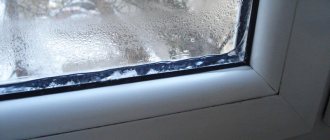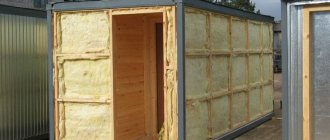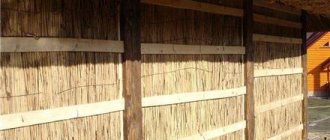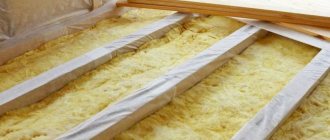When to insulate plastic windows: reasons for heat loss
By purchasing single-chamber and double-chamber plastic windows, homeowners are confident that their home will be reliably insulated from noise, drafts and cold air. However, over time, this confidence can be dispelled by unpleasant realities, and the resulting heat loss will make you think about ways to insulate Euro-windows.
Common reasons that lead to the above problems may be:
- Installation of PVC windows with violations of technology and without compliance with GOSTs. The large number of people who want to replace old wooden frames with new double-glazed windows has become the reason that installation began to be carried out by people who have only a general understanding of it.
- Misalignment of the window frame caused by shrinkage of the house, which is a common occurrence in a new building.
- Physical wear of the rubber seals and the clamping mechanism. Under the influence of weather conditions (cold, heat) during operation, all window components wear out, and this is inevitable.
- Violation of basic operating rules, which include the need to wash the seal and treat it with glycerin to prevent drying out and cracking.
- Poor quality profile. Cheap windows often use cheap plastic parts, which are susceptible to deformation in the heat and can crack in the cold.
If the windows begin to fog up, there is a draft coming out of them, and residents complain about cold glass, then they need additional insulation.
Having found out the reason that led to the violation of thermal insulation, you can already decide whether to look for a specialist for this work or you can do everything yourself.
How to check windows for ventilation and tightness
Visually or using tactile sensations, it is quite difficult to determine the place where the tightness is broken.
Thus, in winter, blowing can often be confused with cold glasses (“cold background”), so to determine possible problems it is better to use one of the following methods:
- A lit candle will help you determine from inside the room where the air is blowing from. You need to bring it close to the window and walk around the perimeter. If the flame burns evenly, then everything is in order in this area. The rapid fluctuation of the flame indicates air currents entering the room from the street.
- If you run a damp palm along the contours of the valves, you will feel a sharp chill in the places where the air is blown. It can blow from under the sash or at the junction of the frame and the slope, and cold can also be felt inside the plastic frame.
- You can hold a piece of paper between the closed window sashes and tug it a little. If the paper is easily removed, or the window does not close tightly, then you cannot do without replacing the seal or adjusting the clamping mechanism.
- A piece of chalk will also help you find places where the seal is not pressed tightly. To do this, you need to paint the rubber parts with it, then close and open the window and inspect the frame. If there are places where it is not painted, then the opening is blown through here.
- You can try to press a little on the closed doors; if the noise from the street becomes noticeably quieter, then it is blowing from the doors.
When should window insulation be left to professionals?
Before you rush to insulate windows yourself, you should think carefully about whether you need to contact a company specializing in this.
It is advisable to involve a specialist if:
- the plastic window was installed recently, and the installation company’s warranty has not yet expired; its specialists must fix all problems free of charge;
- the window is located at a considerable height (in an apartment in a multi-storey building) - such work is associated with a high level of danger;
- there are manufacturing defects or the insulation needs to be changed - in this case, the master will be able to install components and fittings that will be “like original”;
- The work is carried out in the cold season - a professional will be able to do everything efficiently and quickly, without cooling the room too much.
Since the comfort of living in a room depends on the temperature inside the room, if you have the slightest doubt about your ability to do it yourself so that it does not blow, it is better to contact a company specializing in such work.
Is it possible to insulate plastic windows?
It is quite possible to eliminate heat leakage from the room through window systems made of metal profiles with your own hands. The main thing here is to figure out what problem areas exist. In most cases, cold air can enter through the following elements:
- Plastic glazing beads that are either worn out or mechanically damaged.
- Rubber seal that has cracked. Also, this element may lose its elasticity.
- Accessories. It may be of poor quality or incorrectly fixed.
- Areas where the glass unit is in contact with the wall or window sill. This happens when there is insufficient amount of sealant or polyurethane foam.
It is better to insulate plastic windows before the onset of the cold season.
To determine the location of a failed plastic window element, you should use one of several methods:
- Run your palm over the contact points between the window and the frame.
- Use a burning candle or lighter. The fire source must be moved around the perimeter of the plastic window, which will allow even a slight passage of cold air to be detected. The flame will be deflected if there is a draft. This technique is characterized as the most sensitive.
- Using a sheet of paper. It is inserted between the sashes, sections of double-glazed windows, and when the window is closed, it is pulled towards itself. This manipulation should be done several times, checking the main places. A slight slipping of a sheet of paper will indicate the problem area.
If plastic windows were installed in a wooden house, then when it shrinks or the wall is skewed, a gap or gap appears between it and the double-glazed window. Here we are talking about violations in the installation technology of the plastic window itself.
How and with what to insulate plastic windows if there is a draft
Once you have identified the problem, you can begin to fix it. Below are the most common reasons for blowing and ways to properly get rid of drafts inside a room.
If there is air between the window sill and the frame
In most cases, this problem can be fixed on your own. The sequence of actions and the necessary materials will depend on the thickness of the cracks and the intensity of drafts.
If there is a small gap (no more than 1-2 mm) from which there is not much blowing, white moisture-resistant silicone sealant will help correct the situation. It must be applied using a special gun so that it falls into the gap.
If the gap is uneven and its thickness ranges from 2 to 5 mm, then sealant alone will not do. To seal such cracks, it is better to use a plastic profile for tiling the inner corners of walls in bathrooms. From it you need to cut off a decorative part with a flat plate (1-1.5 cm wide). The gap must be filled well with sealant and the prepared decorative corner must be inserted into it.
If it starts to blow from the window immediately and very strongly, then you need to check the insulation of the ebb. To do this, it is necessary to remove and inspect the mounting seam between the frame and the doorway. Then blow out all the fistulas, holes and voids with polyurethane foam.
There is no need to try to caulk the cracks with padding polyester, foam rubber or construction waste. Foam is the best choice for these purposes; it can be plastered on top with cement.
Modern window insulation technology
To ensure high-quality and long-term insulation of wooden windows in an apartment for the winter, it is better to resort to modern technology using silicone sealant and/or synthetic sealing materials. To insulate windows with sealant, it is better to purchase an inexpensive tool - a lever syringe. A tube of sealant is inserted into this simple device and by pressing a lever, the required amount of silicone is squeezed out of it. It is better to use a transparent sealant; if it comes out on the glass, it will not be noticeable.
Insulating windows with sealant
First, you need to remove the glass from the window. Using a strong flathead screwdriver, remove the wooden glazing beads holding the glass. In order for the screwdriver to fit better into the joint between the frame and the bead, its tip is sharpened with a file or on a whetstone. The glazing beads are first raised, as if “torn” out of place, along the entire perimeter of the frame, then removed completely - first the bottom one, then the side ones, and lastly, holding the glass, the top one. After this, carefully and carefully remove the glass. This must be done with cloth gloves to avoid cuts.
I recommend: What is door hardware
We use a spatula to clean the glass seat from dust and dirt, and then use a lever syringe to apply a bead of sealant around the perimeter of the frame. After that, all we have to do is install the glass in place and secure it with glazing beads. How this will all look can be seen in the figure below.
Old glazing beads often break when removed, so stock up on new ones first (they are sold at construction markets and construction supermarkets).
Of course, it is best to repair and insulate windows at the same time; in this case, in addition to changing glazing beads, you can clean off the peeling old paint, fill cracks and fallen knots, and replace window fittings (windows, awnings, etc.) with newer and more attractive ones.
Insulating windows using a sealing cord (tube)
Insulation of windows at the junction of opening elements (window frames, transoms, vents) is done somewhat differently, namely, using a special sealing cord. It is a flat tube made of soft rubber, one side of which is covered with an adhesive composition, like adhesive tape, and closed with a removable tape, such as in the photo.
Often, such tubes are sold double. You can also attach them both, as shown in the figure above, or one at a time (they are easily separated, without any tools).
The sealing tube is placed in such a way that the window frame, when closing, presses it at a right angle, and does not slide along it.
It should be remembered that although the tubes are very soft, installed along the entire perimeter of the frame junction, they create significant resistance, so the frame may have to be trimmed a little. However, when insulating old windows for the winter with your own hands, you are often faced with the fact that some of the gaps are so large that the sealing tubes are installed even too loosely. Sealing gaskets are also made from other materials, in particular foam rubber; they are usually the cheapest, but they rarely last more than one season.
If it blows around the perimeter of the sash
The reason for the swelling may be that:
- windows are not set to winter mode;
- the rubber seal has become unusable;
- The clamping mechanism has become loose.
To prepare the window for low temperatures, you need to adjust the lower and upper hinges, and also move the locking pin to the desired position.
Step-by-step instructions for replacing the seal if it is unusable will be as follows:
- Remove the window sash so that the design features do not restrict access.
- Remove the old seal on the frame and sash and replace it with new contours.
- Be sure to glue the rubber bands together at the joints so that gaps do not form later. Avoid the formation of “accordions” and overlaps.
The clamping force can be adjusted on the upper and lower hinges using a No. 4 hex wrench. If you rotate the hex clockwise, the sash will be pressed against the hinge, and counterclockwise, vice versa. A video on the Internet will tell you how to do this correctly.
If it blows along the edges of the slopes
The main reason for such a draft is a damaged assembly seam. Even with the best-quality installation, this can happen after 5-10 years. To fix this problem, you need to disassemble the slopes, then apply foam along the seam and reinstall the slopes.
You can additionally insulate the slopes inside:
- polystyrene foam - this is the most affordable material that even a beginner can work with;
- foamed polyester - it is resistant to moisture and can provide additional heat and sound insulation, but care must be taken to seal the joints in the slopes;
- mineral wool - for plugging seams, it is not inferior in quality to previous materials, but you need to work with it in a respirator so that its particles do not irritate the mucous membranes, getting into the eyes and respiratory tract.
It is important not only to insulate slopes from the inside, but also from the outside. This will help protect the polyurethane foam from drying out, the doorway from fungus, and also make the temperature in the house warmer.
How to choose a ribbon
The choice of self-adhesive insulation for windows must be approached very carefully. The tape is made from various materials and can have different profiles. This is worth considering when choosing it.
If you decide to use a rubber band, it is better to choose the softest one. Thanks to this, the insulation will reliably close all the cracks and reduce heat loss from the window structure to a minimum.
As already mentioned, insulation can have a different profile. When solving this issue, it is worth paying attention to the nature of the cracks.
If the gaps between the frame and the sash are straight, you can use rectangular profile insulation. It can be used to seal cracks up to 4 mm thick.
In other cases, the optimal solution would be materials with profiles of various shapes that resemble letters of the Latin alphabet.
For example, material with an “O” profile allows you to hide uneven cracks, the thickness of which can reach 7 mm.
When choosing insulation, special attention should be paid to the expiration date.
If it has expired, the adhesive properties of the tape have decreased significantly. As a result, this can lead to it quickly peeling off from the window.
Insulating windows for the winter with your own hands
It is not always possible to carry out complex insulation work with the involvement of specialists. In this case, simple methods will help to quickly and briefly eliminate the causes of drafts at home, postponing the work for a while.
In a wooden house, plastic windows from which it blows can be insulated from the outside by simply covering them with cellophane. To do this, it is better to use film in several folds, and its cut should be slightly larger than the area of the window with slopes. You can cheaply and securely fasten cellophane using thin wooden glazing beads or slats and nails.
Another way to make your home warmer is to sew new curtains or make winter blinds. To sew warm curtains, you need to use thick fabrics that will not allow the cold to pass through. It is acceptable to use 2-3 fold fabric or lined curtains. Winter blinds can be made from ordinary ones by simply wrapping them with woolen fabric.
You can deal with drafts using the same method used for wooden frames - seal all joints and cracks. It is not necessary to use strips of paper and soap solution for this. Painting tape will provide more reliable adhesion.
It is important to remember that all of the methods listed do not fundamentally solve the problem, but only give a little time to wait for favorable conditions.
Insulation of windows with film
Finally, let’s consider another option for window insulation - window insulation with film. There are special films, but they are not always on sale and are not cheap. Instead, it is quite possible to use ordinary polyethylene film, which is attached to the outside of the window or, if not possible (if the window, for example, is located at a height that is difficult to reach), from the inside. Such insulation can be done for → the veranda of a private house, at the dacha, in outbuildings (the link describes how to build a veranda). The entire window is covered with film, securing it as close as possible to the outer edge of the frame.
I recommend: How to install a metal entrance door in a house
When fastening the film, it must be tensioned evenly without allowing any slack; where the film is poorly fixed, it will quickly become frayed by the wind.
Choosing film for window insulation
Film for insulation is usually chosen based on the requirements of its transparency, often forgetting about such an important characteristic as frost resistance. The fact is that ordinary transparent polyethylene film becomes brittle at subzero temperatures and breaks like thin glass in winter winds. Therefore, when purchasing film, ask the sellers what temperature it is designed for. Typically, film that can withstand prolonged exposure to low temperatures has a yellowish color.
It is better to purchase film not in markets, but in construction supermarkets, where the stated characteristics are usually more consistent with reality. If aesthetic qualities are not particularly important, it is better to use a film intended for the construction of a so-called vapor barrier or water barrier. A distinctive feature of such films is that they are reinforced with fiberglass mesh and are usually designed for negative temperatures down to -40 C. True, such a film costs almost twice as much, but it will last three to four years.
How to attach film to windows, insulate windows with film
Films are often attached to window frames using an industrial stapler. It's convenient and reliable. Especially if the work has to be done when the “white flies” have already started flying and your hands are frozen and do not obey in the winter wind.
A stapler is really a good alternative to push pins, even if you insulate the windows yourself, but you should keep the following in mind - the staplers of the stapler are thin, and the film sometimes breaks over time at the “shooting” point. To avoid this, you need to put some kind of pad under the bracket. Again, if appearance is not particularly important, regular cloth tape will work well as a lining. If appearance matters, the fabric tape can be replaced with plastic tape, or linings can be cut from an additionally purchased expensive, thick film, especially since only a little of it will be needed. The length of the staples should not be more than 8 mm, otherwise, when spring comes and you need to remove the film, you will be tortured to pull them out.
Insulation for plastic windows
Relatively recently, new insulation for plastic windows has appeared - energy-saving film and built-in window heating.
Energy-saving film on glass
Energy-saving film is a very thin transparent material with a layer of rare earth elements applied to it. It is practically invisible on the windows and does not affect the level of illumination. The film can reduce overall heat loss through windows by 30%.
When choosing it, you first need to find out the coefficients of light transmission and heat reflection, and the wavelength range. Another important point: the heat-saving film does not allow UV radiation inside, which is necessary for the life of plants, so green friends will need to organize additional lighting.
Based on the installation method, a distinction is made between shrink film and that which is applied wet. To glue heat shrink material, you must perform the following steps:
- Prepare the window by washing and degreasing the glass.
- Apply double-sided tape to the edges of the sash or frame.
- Attach the film to the adhesive tape without pulling too much.
- Heat the surface with a hairdryer so that the film shrinks and stretches, forming a flat surface.
With the wet method, the glass is also first washed with window cleaner and degreased with alcohol or gasoline. Then the film is cut, leaving no reserves. Moisten the surface of the glass with a soap solution (colorless shampoo or other detergent will do). A piece of film begins to be glued on top and smoothed from the center to the edges.
You can also insulate balcony doors using shrink film.











